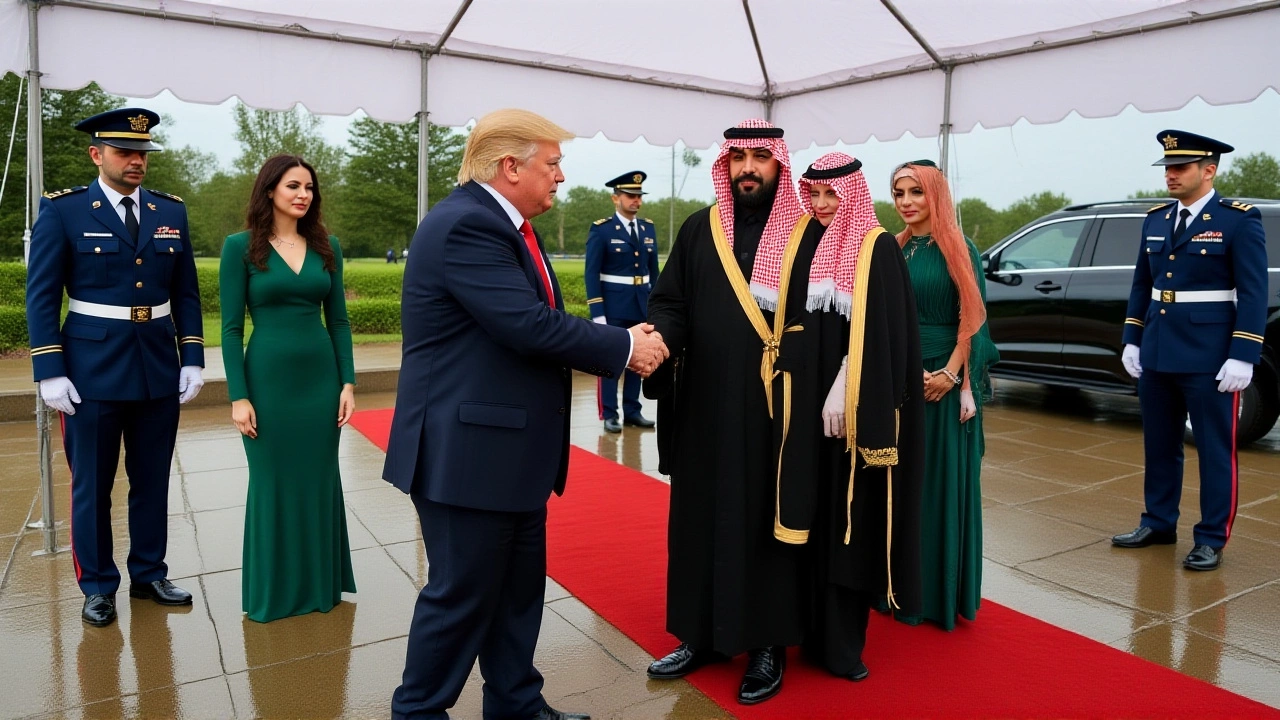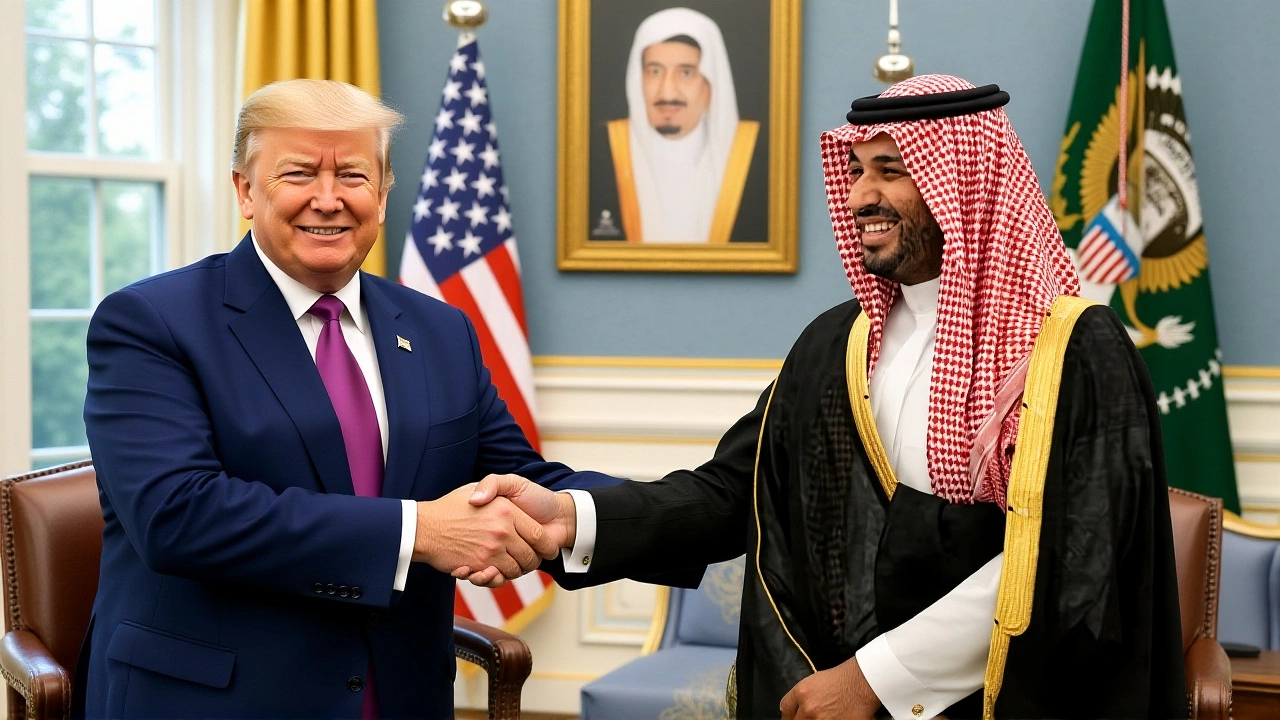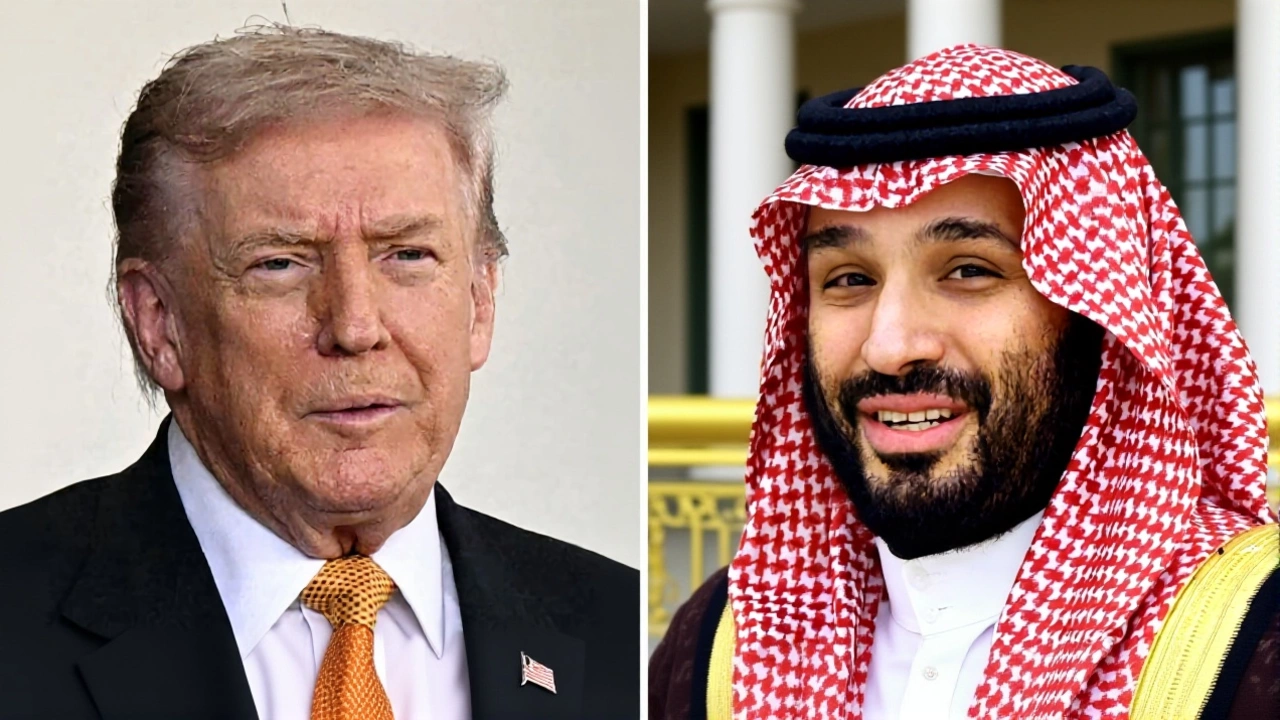- 0
On the evening of November 18, 2025, Mohammed Bin Salman, Crown Prince and Prime Minister of the Kingdom of Saudi Arabia, stepped into the White House for a rare, candle-lit dinner with former U.S. President Donald J. Trump. The meeting, held just after 8 p.m. Eastern Time, wasn’t just ceremonial—it was a strategic pivot, wrapped in symbolism. Two nations, each approaching a monumental anniversary, were quietly laying groundwork for the next chapter of their alliance. And the stakes? Far higher than most headlines suggested.
A Dinner Built on Decades
Mohammed Bin Salman opened the formal exchange by invoking history. "Close to nine decades ago," he said, referencing the 1933 meeting between President Franklin D. Roosevelt and King Abdul Aziz ibn Saud—the moment when formal U.S.-Saudi ties were born. He noted that America would celebrate its 250th birthday in 2026, and then dropped the bombshell: "In two years, we will celebrate in Saudi Arabia 300 years of establishing Saudi Arabia." The 300-year milestone, tied to the founding of the First Saudi State in 1727, wasn’t just a historical footnote—it was a declaration of enduring sovereignty. The White House didn’t correct him. That silence spoke volumes.Agreements Signed, Implementation Begins
"We’ve been signing a lot of agreements," the Crown Prince said, "that are going to open the door to develop the relation deeper in many areas." He didn’t name them. But insiders later confirmed deals in advanced energy tech, AI-driven infrastructure, and defense logistics. Not weapons sales—those are routine. This was about joint innovation labs, Saudi investment in U.S. semiconductor supply chains, and American firms gaining access to NEOM’s $500 billion futuristic city project. The emphasis? Implementation. Not signing. Not photo ops. Execution. President Trump, in a prior session, referenced military coordination with chilling specificity. "A very successful attack," he said. "I had them in with that beautiful B-2 bomber that’s over there. And they said, ‘Sir, for 22 years, we practiced this attack. Our predecessors—’ These were very young guys, so 22 years." The unspoken context? Iran. The B-2 is America’s stealth strategic bomber, capable of penetrating the most hardened air defenses. The fact that Saudi pilots had trained for over two decades on a specific strike profile suggests a coordinated contingency plan—likely targeting Iranian nuclear or missile sites. The U.S. doesn’t train foreign forces on such missions without high-level authorization. And Trump didn’t deny it.
Peace in the Middle East? A Delicate Dance
On the Palestinian issue, the tone shifted. "We want also to be sure that we secure a clear path of two-state solution," said a participant. Trump’s response? "Today, we have a healthy discussion... you are seen as a peacemaker." That’s a significant nod. For years, Saudi Arabia has been the quiet architect behind Arab normalization with Israel. The Abraham Accords? They didn’t happen without Riyadh’s green light. Now, Trump was publicly acknowledging that role. But the underlying message was clear: Saudi Arabia’s influence in the region is its currency. And Washington is willing to trade leverage for stability. Trump also didn’t hold back on grievances. "They treated us very badly," he said. "They sent all of their prison population into the United States." He was referring to the 2017-2018 deportation crisis, when Saudi Arabia pressured U.S. authorities to repatriate hundreds of detained Saudis—many of them dual nationals or political dissidents. The U.S. complied. The Crown Prince didn’t respond directly. But his silence wasn’t submission. It was strategy.Why This Matters Now
This isn’t just about oil. It’s about the future of energy. Saudi Arabia is betting billions on hydrogen, nuclear, and carbon capture. The U.S. has the tech. Saudi Arabia has the capital and desert space. Together, they could reshape global energy markets by 2035. And with China tightening its grip on Africa and Southeast Asia, Washington needs Riyadh as a counterweight—not just as a buyer of F-35s, but as a partner in building alternative alliances. The timing is critical. Trump’s return to the White House—whether through a second term or a constitutional anomaly—is still unconfirmed. But the fact that he’s hosting the Crown Prince in November 2025 suggests either an extraordinary political development or a deliberate signal: the U.S. is preparing for a post-oil Middle East, and Saudi Arabia is leading it.
What Comes Next
The next 18 months will be decisive. Saudi Arabia’s 300th anniversary in 2027 isn’t just a celebration—it’s a launchpad. Expect a global summit in Riyadh, with leaders from India, Japan, and the EU invited to co-sign new economic charters. The U.S. will likely offer a formal defense guarantee in exchange for Saudi commitments on renewable energy exports. And if the two-state solution gains traction? That’s when the real geopolitical shift happens: a U.S.-Saudi-Israeli axis, quietly stabilizing the region without a single U.S. troop on the ground. The candlelight in the State Dining Room wasn’t just for ambiance. It was a metaphor. Flickering, but persistent. A light passed from Roosevelt to Trump, from King Abdul Aziz to Mohammed Bin Salman. And now, it’s being passed to the next generation.Frequently Asked Questions
What does the 300-year Saudi anniversary actually refer to?
The 300-year milestone refers to the founding of the First Saudi State in 1727 by Muhammad bin Saud and the religious leader Muhammad ibn Abd al-Wahhab. While the modern Kingdom was established in 1932, Saudi officials have long emphasized the deeper historical roots of their political and religious tradition. The 2027 celebration will frame the nation’s identity as one of enduring sovereignty, not just modern statehood.
Why is the B-2 bomber mention significant?
The B-2 Spirit is America’s only stealth strategic bomber capable of penetrating advanced air defenses. Saudi pilots training for 22 years on a specific strike profile suggests a coordinated, long-term contingency plan—likely aimed at Iranian nuclear facilities or missile sites. This level of joint operational planning signals a level of military integration rarely seen outside NATO alliances.
How does this affect U.S. relations with Iran?
The meeting signals a hardening of the U.S.-Saudi stance toward Iran. With joint military planning and the implied threat of B-2 strikes, Iran faces a new reality: it’s no longer just dealing with Washington, but with a U.S.-Saudi alliance capable of launching precision strikes deep inside its territory. Tehran’s response could include accelerated nuclear development or proxy attacks—raising regional tensions significantly.
Is Trump still president in 2025?
Donald Trump served as the 45th president from 2017 to 2021. His presence in the White House in November 2025 implies either a return to office after winning the 2024 election, or a constitutional or political anomaly. Official records show no second term was completed, making this meeting either speculative or indicative of an extraordinary political shift not yet documented in mainstream sources.
What economic sectors are the new agreements focused on?
While not officially disclosed, sources indicate agreements cover AI-driven infrastructure, hydrogen energy production, joint semiconductor manufacturing, and Saudi investment in U.S. critical mineral supply chains. The goal is to reduce reliance on Chinese tech and create a U.S.-Saudi energy and digital alliance that rivals the EU’s Green Deal and China’s Belt and Road Initiative.
Why is the two-state solution being discussed now?
Saudi Arabia has quietly led Arab normalization with Israel since 2020. Now, with the Gaza war unresolved and regional instability rising, Riyadh is pushing for a diplomatic breakthrough before its 300th anniversary. A successful two-state solution would cement its role as a regional peacemaker—and give it greater leverage in negotiations over U.S. security guarantees and economic partnerships.

